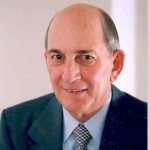The Power of Philanthropy
Editor’s note: This is the final post in the "Making Change by Spending Down" series, produced in partnership by The Andrea and Charles Bronfman Philanthropies (ACBP) and GrantCraft. A retrospective case study drawing from the 2.5 year blog series can be found here. All posts can be found here. For more information about the series and how you can share your knowledge with the field, too, please email [email protected] or tweet @grantcraft.
Through this blog series, we’ve heard firsthand from many different ACBP partners including staff, grantees, and other funders about their experiences. We asked questions about the spend down of one another, served as mentors to incubated programs and the next generation of leaders, and, all the while, learned what it means to fulfill our mission up until the very end. Now that we’ve conducted 30 months of blogging about topics such as managing human resources, grantee sustainability, and operational considerations, I’d like to reflect on what we did and what’s next for the field.
One of the most important things we did throughout our lifespan was to hire motivated staff who could support our strategic investments. As the founders of ACBP, Andy and I had varied interests. Bringing different perspectives to the table allowed us to tackle more issues through a unified lens and unique responsibilities, which worked well for us.
When we started the foundation in Montreal, Canada, in 1985, we agreed that our fundamental focus would be on helping to develop leadership, cultural appreciation, and a philanthropic mind set with young people. Our medium would be informal education for people ages five to 25 years, in order to help them come to grips with their heritage in a positive way. When we opened our doors, we chose Dr. Stephen P. Cohen as our foundation’s first president and Tom Axworthy to be our executive director. When we opened the foundation office in Jerusalem, Janet Aviad was our leader. Tom and I worked closely on the Heritage Minutes, which fulfilled our mandate of creating the study of Canadian heritage for young people. While I was interested in the Canadian heritage piece and bringing young Diaspora Jews to Israel, Andy was passionate about engaging next generation donors, leading our The Gift of New York effort, and bringing after-school programs to Israel’s education system through the Karev Program for Education Involvement.
When Jeff joined our team in 1997, we worked to identify areas of impact and ensure that those aligned with our desire to build identity, meaning, and community in all program areas. Each of us brought different skills to the table. Jeff was the recruiter of great talent and started us with an incubation strategy through Birthright Israel.
Our approach to learning while embarking on new initiatives became our signature: run pilot programs, develop partnerships, engage in thoughtful evaluation. After evaluation proved the validity of a program concept, we sought funding partners and measured our own effectiveness.
We learned a couple of teachings along the way.
First, we can’t go at anything alone. Our partners truly are partners with us in shaping programs. And we haven’t tried to impose our will on the combined efforts. For example, when the Heritage Project became too big for us, we looked to our partners to gradually take on more responsibility. The Heritage Minutes were on hiatus for a while, but now they’re back and are more impressive each time I watch.
Second, there isn’t just one road to take to run a family foundation. The best decisions come from the integration of many ideas from colleagues and advisors. Jeff has always been insistent on collegial work. The executives aren’t the fount of all knowledge. To hone in on smarter answers, you need your colleagues to ask questions with different streams of logic.
Third, what became important was exploding the popular myth that best practice is to stay involved in a program for three years and then step out. We determined that if a program is successful, one should stay with it. Once our programs had proven successful, we found partners to gradually begin funding the program, and over time our funding was reduced and in some cases it ended. Of the nine core operating programs that we initiated, all but one will continue to shape the legacy of ACBP.
It was important for us to be upfront with foundations and grantees about the how and why of our spend down. We accomplished this in our final years by partnering with GrantCraft to execute this ongoing series. Indeed, we learned more about ourselves through the process. We want to thank Jen and her team at GrantCraft for their hard work and dedication to the process. In the past two years, we noticed a change in the way that our colleagues and partners think about spend down. The series allowed them to think more critically about it by asking specific questions, and commenting on not only the challenges, but also the opportunities that become available in such a unique setting.
The overarching theme of ACBP’s journey and of philanthropy, more broadly, is evolution. We know that the field of venture philanthropy will keep growing just as it has for the past 30 years. The topic of spend down is still relatively new. I hold no brief about its wisdom compared to that of a longer-lasting lifespan. For us, it was the right decision. We know that our peers will continue to think strategically about their place in the philanthropic landscape. The fact that we are seeing more foundations helping to solve the problems they identify through strategies reflecting their values sets a good example for others. I know we will continue to see societal growth through the power of philanthropy.

